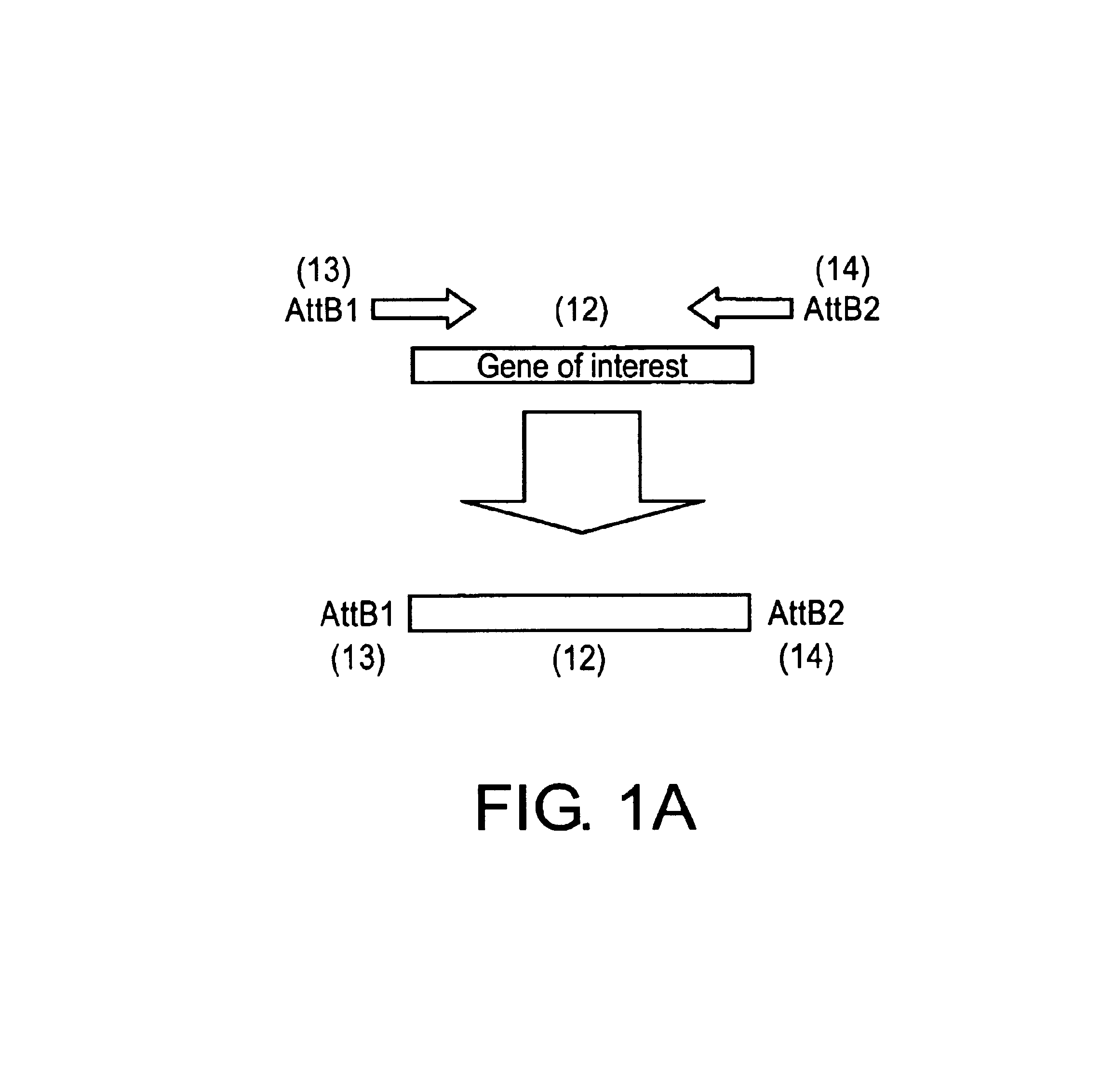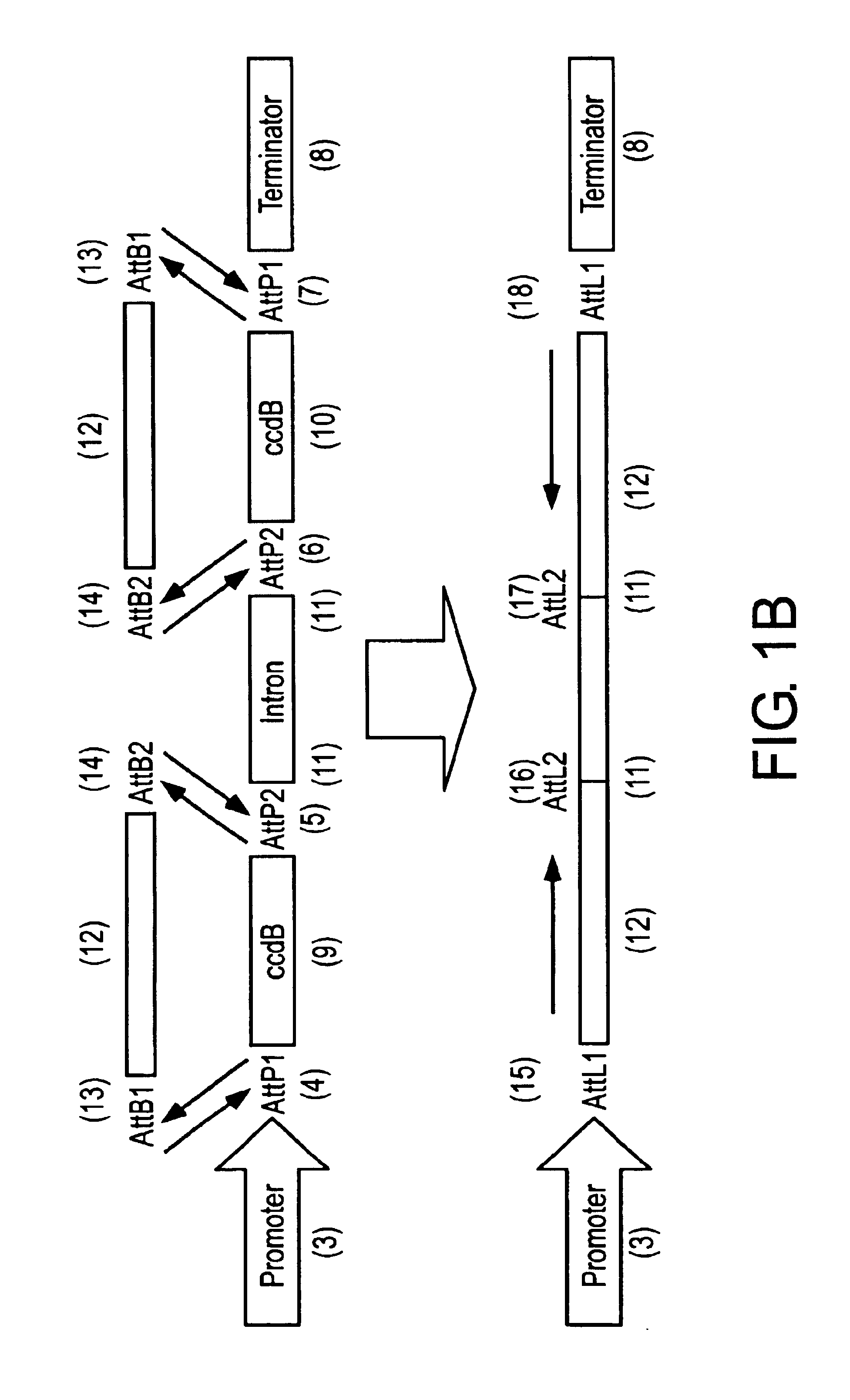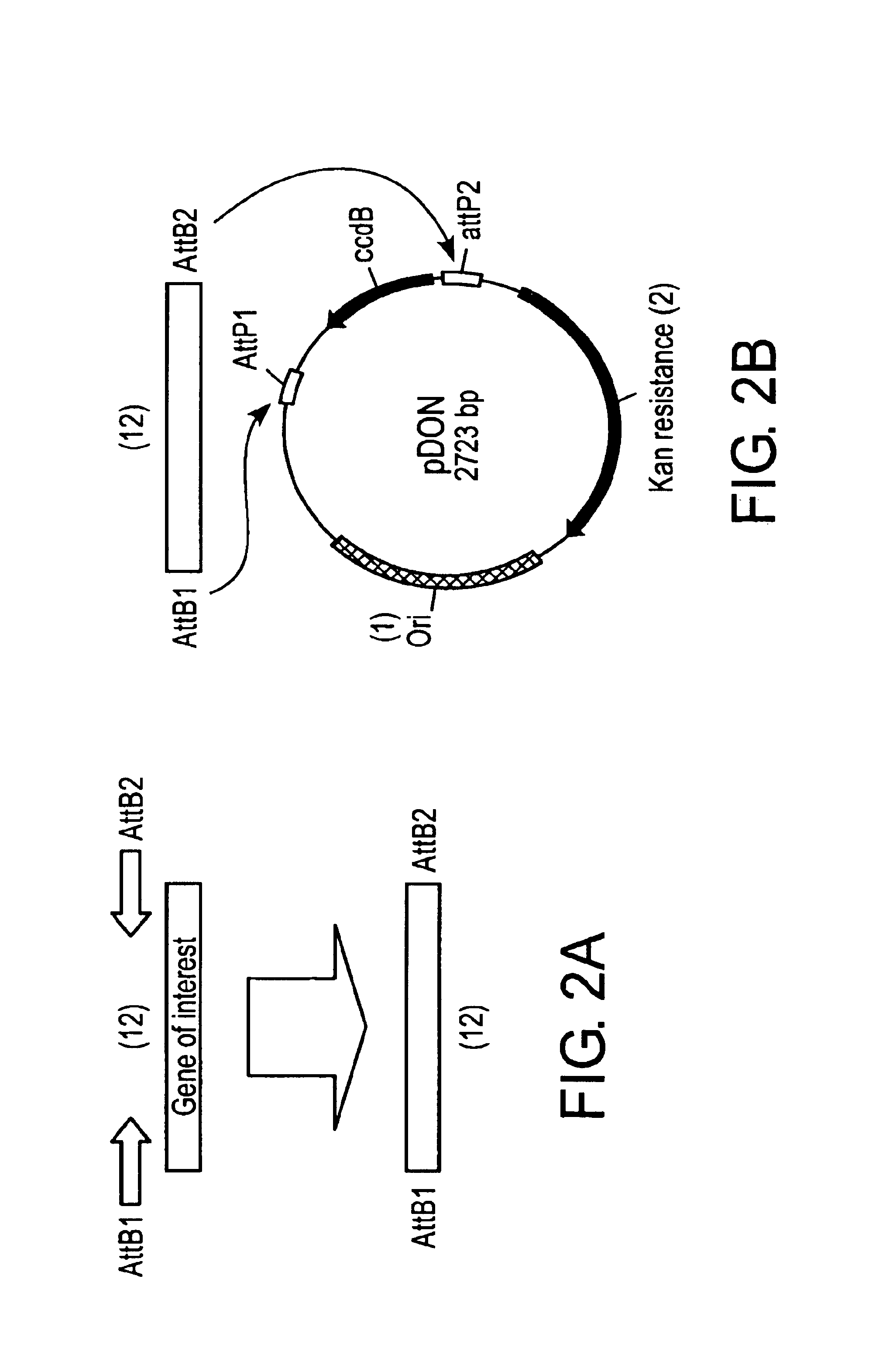Methods and means for producing efficient silencing construct using recombinational cloning
a technology of recombinational cloning and efficient silencing, which is applied in the field of efficient methods and means for producing chimeric nucleic acid constructs, can solve the problems of hampered silencing of genes, particularly plant genes using anti-, , especially, and achieves a relatively low proportion of silenced individuals
- Summary
- Abstract
- Description
- Claims
- Application Information
AI Technical Summary
Problems solved by technology
Method used
Image
Examples
example 1
Construction of the Acceptor Vector pHELLSGATE
[0193]With the completion of the Arabidopsis genome project, the advent of micro-array technology and the ever-increasing investigation into plant metabolic, perception, and response pathways, a rapid targeted way of silencing genes would be of major assistance. The high incidence and degree of silencing in plants transformed with chimeric genes containing simultaneously a sense and antisense nucleotide sequence, as well as a functional intron sequence suggested that such vectors could form the basis of a high-throughput silencing vector. However, one of the major obstacles in using such conventional cloning vectors for a large number of defined genes or a library of undefined genes would be cloning the hairpin arm sequences for each gene in the correct orientations.
[0194]Attempts to clone PCR products of sense and antisense arms together with the appropriately cut vector as a single step four-fragment ligation failed to give efficient o...
example 2
Use of the pHELLSGATE to Convert Nucleic Acid Fragments of Interest into dsRNA Producing Chimeric Silencing Genes
[0216]To test the acceptor vector pHELLSGATE, about 400 bp, 200 bp, 100 bp, 50 bp and 25 bp fragments of the Arabidopsis thaliana chalcone synthase isomerase coding sequence (SEQ ID No 12) (having respectively the nucleotide sequence of SEQ ID No 12 from the nucleotide at position 83 to the nucleotide at position 482; the nucleotide sequence of SEQ ID No 12 from the nucleotide at position 83 to the nucleotide at position 222; the nucleotide sequence of SEQ ID No 12 from the nucleotide at position 83 to the nucleotide at position 182; the nucleotide sequence of SEQ ID No 12 from the nucleotide at position 83 to the nucleotide at position 132; and the nucleotide sequence of SEQ ID No 12 from the nucleotide at position 83 to the nucleotide at position 107) were used as nucleic acid fragments of insert for construction of chimeric genes capable of producing dsRNA.
[0217]This g...
example 3
Evaluation of Plants Comprising the Chimeric Genes of Example 2
[0224]The vectors containing the dsRNA producing chimeric constructs with the 400, 200, 100, 50 and 25 nucleotides of chalcone synthase in inverted repeat (Example 2) were introduced into Agrobacterium tumefaciens strain AGL1, GV3101 or LBA4404 either by electroporation or tri-parental mating.
[0225]Transgenic Arabidopsis lines are obtained by transformation with these Agrobacteria using the dipping method of Clough and Bent (1998).
[0226]Chalcone synthase activity is monitored by visual observation of stem and leaf color (normally in plants grown under high light, and by unaided or microscope assisted visual observation of seed-coat color.
[0227]Most of the transgenic lines transformed with the above-mentioned CHS silencing constructs show pronounced silencing. The seed color of most of these lines is virtually indistinguishable from seed of the tt4(85) mutant to the naked eye. Examination of the seed under a light microsc...
PUM
 Login to View More
Login to View More Abstract
Description
Claims
Application Information
 Login to View More
Login to View More - R&D
- Intellectual Property
- Life Sciences
- Materials
- Tech Scout
- Unparalleled Data Quality
- Higher Quality Content
- 60% Fewer Hallucinations
Browse by: Latest US Patents, China's latest patents, Technical Efficacy Thesaurus, Application Domain, Technology Topic, Popular Technical Reports.
© 2025 PatSnap. All rights reserved.Legal|Privacy policy|Modern Slavery Act Transparency Statement|Sitemap|About US| Contact US: help@patsnap.com



